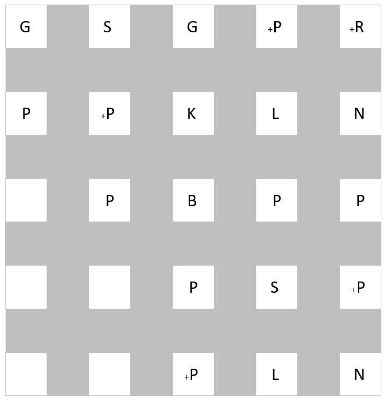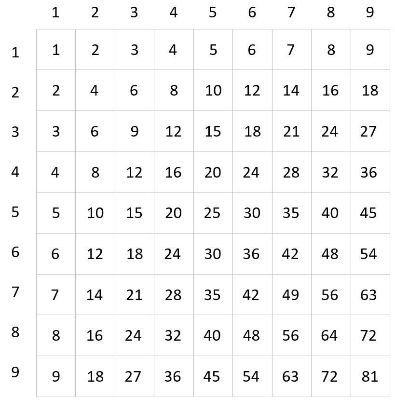006
“Let us suppose this board contains some message, and that it’s something other than a declaration of breaking things off from the girl she was exchanging letters with,”
As if to demonstrate to myself that I was buckling down on this case, I squatted down and faced the mysterious game board recorded in blackboard chalk.
It wasn’t like it was intentional, but I found myself sitting in the black player’s position, and in turn Hanekawa-san moved right in front of me, in other words, to the white player’s position, and sat in the seiza-style. How can she sit in seiza on asphalt?
It wasn’t close to an official game record, it was a strange picture.
I suddenly grew uneasy about what people would think if they saw me in a place like this, but there was no one, not only around the Shogi Association but as far as I could see.
I don’t think this needs specialized knowledge in particular to decipher. I’m sorry you came all this way to ask a pro for help, Hanekawa-san, but this is strictly a ‘problem’ that one middle schooler handed another.”
“But didn’t you become a pro when you were in middle school,
Kiriyama-kun?”
“No, those kinds of middle schoolers are…”
Only five people ever, I was going to say, but stopped—sounding boastful was contrary to my intentions. In this case, if I said something imprudent, her expectations of me might rise.
I focused and contemplated.
Since I never saw this kind of ridiculous board before, to my regret, my reading is quite shallow—I was liable to be blown away by the ridiculousness that we were seriously facing this kind of board.
We might need a different approach.
What if it was an even more clever kind of riddle?
If so, then it was possible that it was necessary to understand this ridiculous, er, this board.
“Clever, huh… I hadn’t really considered it from that perspective. But if so, it’s no different than saying we can’t understand the message. If shogi is a conversation, then what are the black and white
players on either side of the board talking about?” A conversation?
It seemed that an amateur like Hanekawa-san just happened to say those words, but it was absolutely true that there were many times where a shogi match had been likened to a conversation between professionals. I, myself, have had that experience—the moments I experienced when I “had a conversation” with my opponent became an indescribable sensation.
“…… Oikura-san and her partner were only simply exchanging shogi moves though?”
“Yeah. That’s what I heard. Not even an accompanying note, she said. Oikura-san probably thought it was cooler that way.”
“She probably thought it was cooler you said? And suddenly things got ugly... And then… when it reached the point that they thought to start a new game, this board state came… then would it be alright to consider that the black player was the person she was exchanging letters with?”
“Hm. Hmm. Oikura-san didn’t come out and say it herself, but if you think about it logically, that would be right.”
“Which means,”
I returned my eyes to the game record.
“Then we can interpret the sender’s message as only being contained in the black player’s pieces… maybe.”
It’s not like I was saying this confidently, so I desperately made my sentence ending vague—actually, it was a forced guess. If there had been any other clues to go on, it was speculation that would have been bluntly ignored.
But this guess seemed to strike Hanekawa-san,
“I see!” and she slapped her knees—actually, since she was pounding her thighs while sitting in seiza on asphalt, she damaged her bones. She fainted in agony for a short while, but she soon stood back up (what are you doing), “Then I’ll draw a board where only the black player’s pieces remain, over here,” and for the third time the chalk raced across the asphalt.
At any rate, you can’t just erase and redraw things when you’re drawing on the ground—the front of the Shogi Association was looking more and more like a modern art exhibition. Aren’t I the one they’re going to get mad at for this? “Ok, done. I’ve cleaned it up.”

With half the pieces gone, I expected that it would make things a little clearer, but while it was certainly cleaner, it wasn’t clear. You could also say that the more our outlook improved, the more our confusion increased.
“And yet, Kiriyama-kun, message aside, hasn’t some kind of regularity become clear?”
So saying, Hanekawa-san applied a correction to the newly drawn board—turning the chalk sideways, she filled in a part, no, the majority of the board, as if she were drawing lines in a playground. As a result, we ended up with a board, no, a diagram, like the one that follows.
“If you look at the squares of a shogi board as a grid….. You place the pieces so that they don’t overlap on the grid?”

I said, looking at it like it was the kind of thing one would understand once he sees it—there was no other way to put it, so it was all l could say.
As I couldn’t guess its meaning.
It was certainly as Hanekawa-san said, the regularity was clear as day—she didn’t even need to fill in the other squares to make it easier to understand, I also noticed it—however, this was a “so what?”.
The spaces on the grid are filled with pieces, what are you saying?
Furthermore, it wouldn’t be so bad if all of the spaces were filled, but the lower-left corner had empty spaces—what was the intention behind leaving those five squares empty?
“Well, can’t you just say it’s because each player only has twenty pieces and there’s twenty-five spaces on the game board?”
It was around when that question came out that the possibility that Hanekawa-san’s words that she doesn’t know about shogi (just what she knows) were not her being surprisingly humble.
“In shogi you can use the pieces you captured from your opponent as your own, so if need be, she could also have placed five pieces of the white player for the remaining five spaces.”
From the start, if the players hadn’t been trading pieces, that board state could never have come about (the placement of the lance was clearly odd).
“Ooh. Then, it’s OK to put a pawn here.”
“That’s no good… because it’ll result in double pawn.”
It wasn’t a board state where I could talk about the small details, but it was an occupational hazard and I commented on it. “Then let’s turn it over and make it a promoted pawn,” Hanekawa-san said in an air like she was playing dumb—I thought it strange how she would know that if it was a promoted pawn then the double pawn rule wouldn’t occur, but looking at the board state it seemed she had determined that it would be “acceptable”.
Because of her ignorance, her desire to know the things she didn’t know was exceptionally strong.
Or should I say she was brimming with curiosity… If that wasn’t it, would she come all the way to the Shogi Association if it were just to help someone?
“At any rate, the reason Oikura-san’s pen-pal didn’t put any pieces in these five empty spaces… It looks like there’s regularity, but not, it’s ordered, but confused……”
Hanekawa-san said, as she pondered.
It seems she’s the type that talks while thinking, unlike me.
But in this case, the cause of her annoyance was probably much the same as mine.
Just a while ago this was a completely cryptic and disturbing game board, now assumed to be a dummy with the white player’s pieces removed, and now that we had glimpsed a rule and an exception to that rule, it made the game board wrapped in mystery.
If it’s these kinds of half-measures, I don’t even have the confidence to say the white pieces were dummies.
“Hmmm, but I have a feeling that I’ve seen this pattern somewhere before……”
Hanekawa-san said that, but with a filled-in grid, I didn’t even see it as a shogi board—what is this picture.
I was worrying about being seen drawing pictures on the road with a girl, but now that it had come to this, it was to the point I wanted to try asking other pros passing by for their opinions—but, as always, I didn’t see a trace of anyone around us.
It was to an almost unnatural degree.
“Ahaha, the reason there’s no passerbys might be a problem with our perspective of the world.”
Hanekawa-san said some incomprehensible things.
She might also have been confused.
“Sorry, I’ve been keeping you here, Kiriyama-kun. You had some business to take care of, didn’t you?”
Even saying that now, it’s been far too troublesome, but it’s certainly true that I didn’t come to the Shogi Association to play around.
“Yeah. Today they’re holding the preliminaries for the Lion King Tournament—so it’s really strange. It’s right around the time that other players should be coming.”
“The Lion King Tournament.”
“Oh, it’s a shogi tournament…… In my case, I’m in the bracket where one player out of sixteen will advance to the main tournament…”
As I kept accepting that she wasn’t looking for details on the tournament, I unconsciously grew more talkative—even to me, this was an important match. Never mind it was the prelims, there was also the matter of just what was I doing before an important match. “One out of 16—is it because it’s the Lion King Tournament?”
When she asked me that with a tone of simplicity, I just stared at her in puzzlement.
“N-NO! No, that’s not it! 4 × 4 = 16 or whatever, it’s not for any reason like that there’s a sixteen-man tournament bracket!? There are brackets with fifty-two or thirty-one people, too—”
What’s so upsetting, since it’s not so unexpected that the shogi world would decide brackets based on a pun. I looked flustered correcting myself, but just then Hanekawa-san wasn’t looking at the filled-in grid, but at the first game board.
The unfilled-in one.
A 9×9 game board.
“Kiriyama-kun. I remember where I’ve seen this before! On a wall in a classroom.”
“C—Classroom wall?”
“This is a multiplication table.”

----------------
9 Seiza (正座, “proper sitting”) is the traditional formal style of kneeling with the tops of your feet resting on the floor and sitting on top of your heels. It’s not exactly comfortable even when you’re not doing it on asphalt.
10 Here, “Lion King Tournament” uses the word 獅子 (shishi, “lion”). The number 4 (四) can be read as shi, so “Lion” sounds like “4 4”.
No Comments Yet
Post a new comment
Register or Login